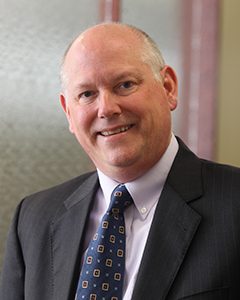The SECURE Act Has Finally Passed – What Does It Mean? (Part One)

The recent passage of the Setting Every Community Up for Retirement Enhancement (SECURE) Act is rightly the cause of celebration throughout the retirement planning industry. As the most significant retirement plan legislation in more than a decade, the SECURE Act (“SECURE” or the “Act”) contains about two dozen provisions aimed at increasing access to tax-advantaged retirement accounts and preventing older Americans from outliving their assets.
As with most legislation passed by Congress, the SECURE Act contains multitudes. In this and my next blog, I will discuss some of its major provisos in detail.
As part of its aim to expand and preserve savings, the Act authorizes open multiple-employer plans (MEPs), providing small businesses the opportunity to more effectively pool their resources to offer a retirement plan that is cost effective and administratively simpler. (More about open MEPs can be found here.) In addition, the “one bad apple” rule – which, technically, could penalize an entire MEP for the violation of qualification rules by a single employer — has been removed.
SECURE also seeks to expand savings by increasing the limit on automatic escalation from 10% to 15%. We have long encouraged plan providers to include auto-escalation, and consider 15% to be the “sweet spot” in this context. Under SECURE, the cap remains at 10% for the first year of an employee’s enrollment in a plan, with the limit increasing to15% after that first year.
The Act also simplifies Safe Harbor 401(k) rules – and anytime something is made more simple and/or flexible, we are generally in favor of it.
The legislation eliminates the safe harbor notice requirement, but maintains the requirement to allow employees to make or change an election at least once per year. The bill also permits amendments to non-elective status at any time before the 30th day before the close of the plan year. Amendments after that time would be allowed if the amendment provides a non-elective contribution of at least 4% of compensation (rather than at least 3%) for all eligible employees for that plan year, and if the plan is amended no later than the last day for distributing excess contributions for the plan year — that is, by the close of the following plan year.
Impact on Small Businesses
The Act also encourages small businesses to adopt plans with automatic enrollment by providing tax credits — up to $500 per year for new 401(k) plans and SIMPLE (Savings Incentive Match Plan for Employees) IRAs that include automatic enrollment. The credit is in addition to the plan start-up credit allowed under present law and would be available for three years. In addition, the credit would also be available to employers that convert an existing plan to an automatic enrollment design.
Such tax credits encourage employers to do the right thing, both for themselves and their employees. One of the challenges we have had in the past has been getting employers who are not happy with their plans to be more proactive; tax credits should prove to be an invaluable tool in achieving that goal.
Small business owners have plainly been starving for some of the items offered by SECURE. In a Nov. 5 letter to Senate Majority Leader Mitch McConnell (R-KY) and Minority Leader Charles Schumer (D-NY), 91 CEOs, presidents and chairpersons pressed for passage of the legislation.
“If the SECURE Act is not signed into law,” they wrote, “more than 700,000 small business workers will not save for retirement at work, more than four million workers in private-sector pension plans will be at risk of losing future benefits, 1,400 religiously affiliated organizations will be at risk of losing access to their defined contribution retirement plans, and more than 18,000 children and spouses of fallen service members will continue to be economically disadvantaged by unfair taxation on their survivor benefits.”
SECURE also addresses the aging of America by repealing the maximum age for traditional IRA contributions, allowing individuals age 70½ or older to contribute to IRAs – something that allows older participants to continue to save for their retirement.
Leakage, Portability, and Part-Timers
In addition, qualified employer plans are now prohibited from making loans through credit cards and similar arrangements – a move that will ensure that plan loans are not used for routine or small purchases, thus preserving retirement savings. This is a terrific part of SECURE, in that it addresses one of the banes of retirement savings – plan leakage, which I wrote about earlier this year.
On the other hand, SECURE also allows for penalty-free withdrawals from retirement plans for any “qualified birth or adoption distributions.” Upon birth or adoption of a child, a participant may withdraw up to $5,000 penalty-free from any defined contribution plan that permits such distributions or from an IRA.
This, to be plain about it, is another form of leakage, and therefore is a part of the Act which we question.
The legislation also provides for portability of lifetime income options by permitting participants in qualified defined contribution plans, section 403(b) plans, or governmental section 457(b) plans to make a direct trustee-to-trustee transfer of lifetime income investments to another employer-sponsored retirement plan or IRA. Again, we were ahead of the curve with portability with the Pentegra Distribution Path™, introduced in 2015.
Another change we are very much in favor of is the legislation’s allowing long-term, part-time workers to participate in 401(k) plans. Previously, employers were generally allowed to exclude part-time employees (those who work less than 1,000 hours per year) when providing a defined contribution plan to their employees.
Now, except in the case of collectively bargained plans, employers who offer a 401(k) plan are required to have a dual eligibility requirement under which an employee must complete either a one year of service requirement (with the 1,000-hour rule) or three consecutive years of service where the employee completes at least 500 hours of service.
Again, anything that encourages employers and employees to save – or expand their savings options – for retirement is to be applauded.
I will examine other aspects of the SECURE Act in my next blog.
About the Author
